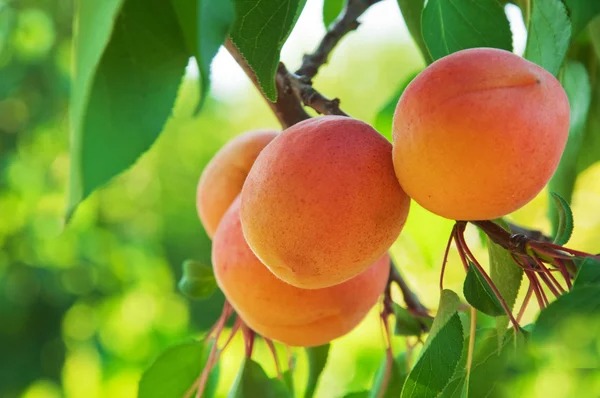How to Plant an Apricot Tree: Fine Tips
Apricot trees (Prunus armeniaca) are known for their delicious, juicy fruit and the beautiful flowers that adorn the landscape in early spring, filling the air with a delightful fragrance. They bloom earlier than cherry and peach trees, adding a touch of elegance to the arrival of spring with their delicate white and pink flowers, spreading their pleasant aroma throughout your yard and your neighbor’s.

With a height and width ranging from 10 to 20 feet, apricot trees are an excellent choice for residential landscapes. To ensure optimal growth, it’s important to plant these fruit-bearing trees in a location that receives a minimum of eight hours of direct sunlight each day. Although apricots are typically self-fruitful, planting a second variety nearby can enhance the harvest. When purchasing an apricot tree, it’s crucial to consider its USDA Hardiness Zones to ensure it can thrive in your specific region.
Apricots Taste
Apricots are known for their delicious and distinct flavor. The taste of an apricot can vary depending on factors such as the variety, ripeness, and growing conditions, but they generally have a sweet and slightly tart flavor profile.
When perfectly ripe, apricots offer a juicy and succulent texture with a delicate balance of sweetness and acidity. The flesh is often described as tender and smooth, melting in your mouth. The flavor can be reminiscent of a combination of peaches and plums, with hints of floral and honey notes.
The sweetness of apricots can range from mildly sweet to quite intense, depending on the variety and ripeness. As they ripen, apricots become sweeter and develop a more pronounced flavor. It’s best to consume them at their peak ripeness to fully enjoy their natural sweetness and flavors.
Apricots are not only enjoyed fresh but are also used in various culinary applications such as baking, jams, preserves, desserts, and sauces. Their unique taste and versatile nature make them a popular choice for both eating fresh and incorporating into a wide range of recipes.
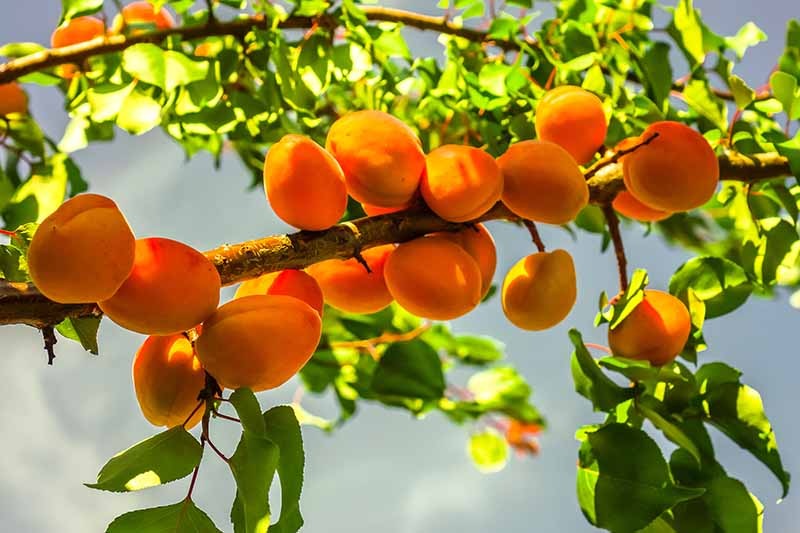
Selecting the Ideal Location for Planting an Apricot Tree
To ensure successful growth of apricot trees, it is essential to consider the following factors: sunlight and soil drainage. The most suitable planting spot is one that receives a minimum of eight hours of direct sunlight daily. Take care to note any neighboring trees or structures that may cast shade on the apricot tree. In regions where Zone 6 or lower temperatures pose a challenge, it is advisable to find a location that offers protection from harsh winter winds. Opt for a planting site with loose, well-drained soil. Ideally, the soil for apricot trees should crumble easily and have a slightly sandy texture, yet retain some moisture and form clumps when damp.
In dry regions, it is important to avoid planting apricot trees in irrigated lawns. Turfgrass requires significantly more water compared to the water needs of apricot trees. Consistently moist soil, which is necessary to maintain a lawn in arid areas, can lead to the demise of apricot trees.
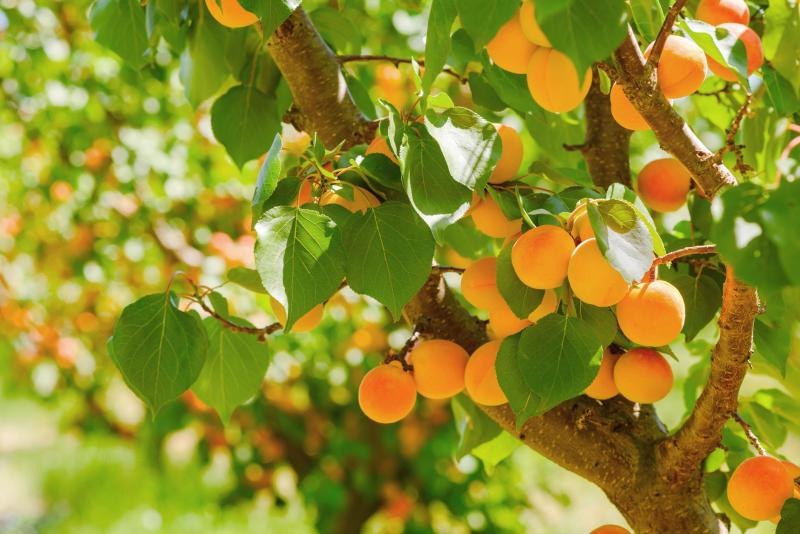
Methods and Timing of Planting an Apricot Tree
To ensure successful establishment before the arrival of hot summer weather, it is recommended to plant apricot trees in spring, as soon as the soil is workable. These trees are available as either bare-root plants or container-grown plants. If possible, selecting a container-grown plant is preferable as it offers convenience during planting and facilitates quick establishment.
While most apricot varieties are self-fruitful, meaning only one tree is necessary for fruit production, research indicates that planting another apricot variety nearby can consistently enhance the harvest. When making a purchase, refer to the apricot variety description to determine which variety may maximize fruit yield.
When preparing to plant, dig a hole that matches the size of the young tree’s root ball. Pay careful attention to the depth of the hole—ensure that when the tree is placed inside, the root flare and the swollen area where the roots emerge from the trunk are slightly above the soil line. For bare-root trees, dig a hole slightly wider than the roots and position the root flare just above the soil line. Fill the planting hole with native soil and water the newly planted tree deeply. It is recommended to water the tree twice a week for approximately two months or until it establishes firm roots. Aim to provide five to ten gallons of water per week.
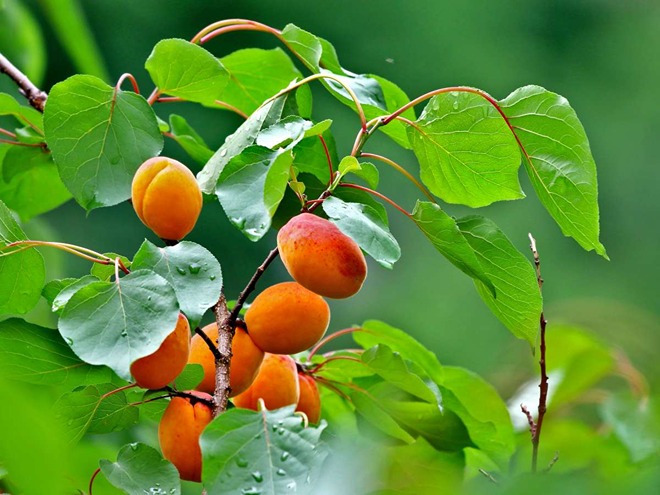
Tips for Caring for Apricot Trees:
Sunlight
For optimal growth, it is recommended to plant apricot trees in locations where they receive a minimum of 8 hours of direct sunlight each day. To promote better sunlight penetration, it is advisable to prune the tree annually, removing excessive growth from the center of the plant.
Soil and Water
Apricot trees thrive in well-drained, loose soil. It is important to avoid wet or boggy soil, as it can lead to various diseases affecting the roots, branches, and leaves of the tree. When apricot trees are young, they benefit from regular watering. However, beyond the initial growing season after planting, apricot trees typically do not require additional watering.
Temperature and Humidity
Apricot trees typically blossom during the early spring season. However, a sudden freeze during late spring can harm the blossoms and hinder fruit production. In such cases, the tree is likely to bear fruit in the following growing season. To minimize the risk of freeze damage to the flowers, it is advisable to select an apricot variety that is suitable for the specific hardiness zone of your area.
Fertilizer
When apricot trees are planted in home landscapes, they generally do not require additional fertilization. The nutrients needed for their growth and fruitful production are typically supplied by the native soil. In situations where the tree’s growth is slow or stunted, it is recommended to conduct a soil test to assess its nutrient composition. This will help determine if any additional nutrients are required.
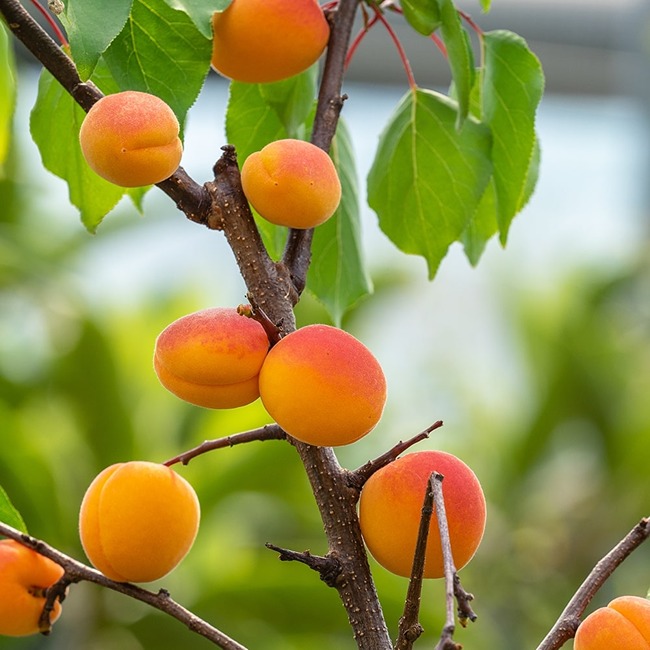
Pruning
To maintain the health and shape of apricot trees, it is recommended to prune them annually during late winter. Begin by removing any broken, rubbing, or diseased branches. Additionally, prune away vigorous shoots known as suckers that emerge from the roots or base of the trunk. Next, shape the tree into a V-shape by selecting three to five main branches. Trim any closely spaced growth on these main branches, aiming to eliminate approximately 25 percent of the interior growth each year. This helps to promote light penetration into the center of the tree and aids in the ripening of the fruit.
Thinning of Excess Fruit
In addition to pruning the woody stems, apricot trees benefit from the removal of excess fruit, known as thinning. These trees tend to be prolific fruit bearers, often producing more fruit in spring than can adequately develop into large, flavorful fruits by summer. When the fruit reaches the size of a grape, it is advisable to pluck away the excess fruit, ensuring that there is a spacing of at least 4 to 6 inches between each young apricot. This practice of fruit thinning allows the remaining fruit to mature fully while maintaining the overall health of the tree.
Pests and Issues
Apricot trees are susceptible to various pests and problems. Root diseases are a frequent occurrence, characterized by yellowing leaves, branch deterioration, and overall weakened growth. Typically, root diseases are caused by excessively moist soil. Another challenge for apricot trees is the development of cankers, which are identified by discolored bark and the presence of sap oozing from wounds. To prevent canker formation, it is crucial to avoid causing any injuries to the tree. Take precautions to safeguard the trunk and lower limbs from lawnmowers and weed trimmers. Whenever possible, prune out infected wood, cutting it approximately 12 inches below the last visible signs of symptoms.

Propagating an Apricot Tree
To preserve the desired characteristics of a specific cultivar, apricot trees are typically propagated vegetatively. In home gardens, the most effective method for propagating an established tree is through stem cuttings.
Cuttings
During the fall season, obtain a 6- to 9-inch cutting from a one-year-old branch that is approximately the thickness of a pencil. Choose a branch with three or four leaf buds and make a cut at a 45-degree angle. Remove any leaves from the lower half of the cutting while leaving the leaves intact on the upper half. Prepare a pot filled with peat moss or damp sand, moisten the cut end of the cutting, and dip it in rooting hormone. Bury the cutting several inches deep in the pot. Place the pot in a location with bright, indirect light and ensure regular watering until the sapling displays new growth in spring, indicating its readiness for transplantation into the garden.
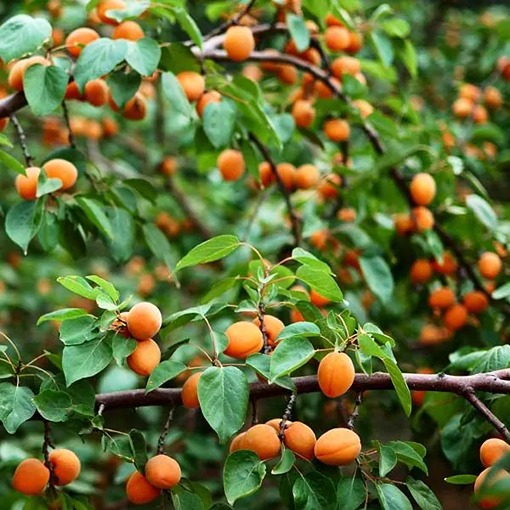
Types of Apricot Trees
- Harcot Apricot Tree: The Harcot Apricot Tree (Prunus armeniaca ‘Harcot’) yields medium to large-sized orange fruits. It is a self-fruitful tree with good tolerance to diseases. The fruits ripen during July, and it is suitable for cultivation in Zones 4–9.
- Moorpark Apricot Tree: The Moorpark Apricot Tree (Prunus armeniaca ‘Moorpark’) produces large golden-yellow fruits that are juicy and ideal for fresh consumption, canning, and drying. This self-fruitful variety ripens in mid-July and thrives in Zones 4–8.
- Puget Gold Apricot Tree: Puget Gold Apricot Tree (Prunus armeniaca ‘Puget Gold’) produces elongated fruits with tangerine-orange skin and warm orange flesh that carries an intense flavor. It is self-fruitful and ripens in August. This variety is well-suited for cultivation in Zones 5–9.
